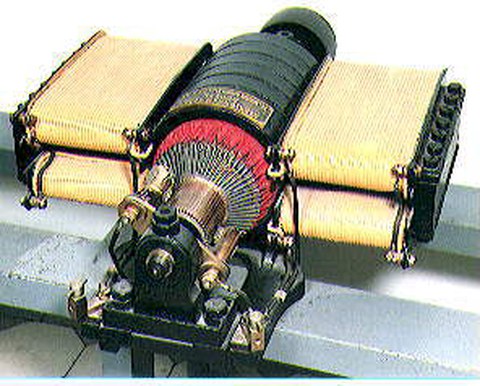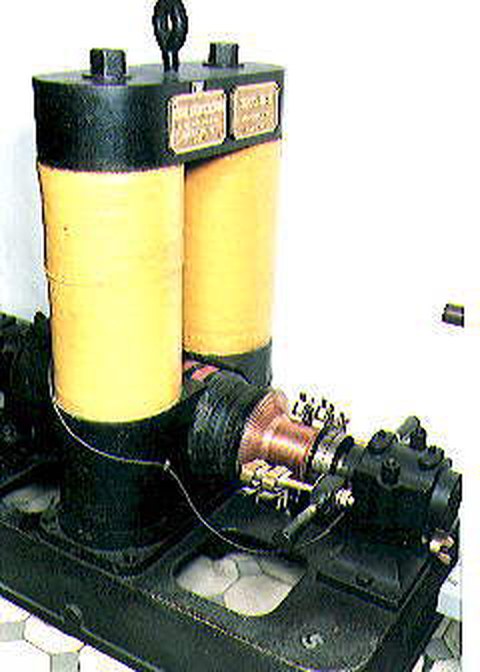Collection of Historical Electric Machines
Image 1: Direct current generator type D3 from Siemens & Halske for lighting systems, built after 1873
The Institute of Electrical Power Engineering at Technische Universität Dresden houses a collection of historical electric machines which illustrate the history of electrical engineering over a long period of time, in particular in Germany. The collection is closely linked to the name of Ludwig Binder (professor at TH Dresden from 1919 to 1958). It was at his suggestion that the existing electric machines were salvaged and partially restored when the rubble of the building was cleared in 1949. The collection, which belongs to the historical cultural assets of the Free State of Saxony, is traditionally preserved and augmented by the Chair of Electrical Machines and maintained by the staff and students.
Image 2: Direct current generator from Siemens & Halske and Deutsche Edison-Gesellschaft for the illumination of Leipziger Straße in Berlin, built after 1884
Today, the collection comprises more than 70 valuable items, most of which have been restored and are on display in the Görges Building. The objects document the development from the beginnings of industrial electric machine construction in the 1870s to the present. Most of them are DC machines that were manufactured up to the turn of the century for use in industry, trade and commerce. These include originals from such famous manufacturers as Siemens & Halske, Deutsche Edison-Gesellschaft, AEG, Kummer & Co. and Siemens-Schuckert-Werke. The collection is supplemented by early AC and three-phase machines, as well as cutaway models of modern electric machines. Information panels provide the most important data for each item, such as machine type, manufacturer, year of construction, as well as additional information on manufacture, use and operating principle.
Image 3: Alternator from Siemens & Halske for lighting systems with Yablochkov candles, built 1878–1892
In addition to the historically valuable machines, the second floor of the building houses an exhibition of small electric machines from the recent past to the present. These items serve a primarily educational function. Therefore, each type of machine has detailed explanations of its construction and operating behavior, which provide both students and the visiting public with information on the essential contexts and areas of application.
The entire collection is open to the public free of charge. Guided tours are available by prior appointment (Dr. Hildebrand). More detailed information on the exhibits is available in the online catalogue of the “Historical Electric Machines” collection.



